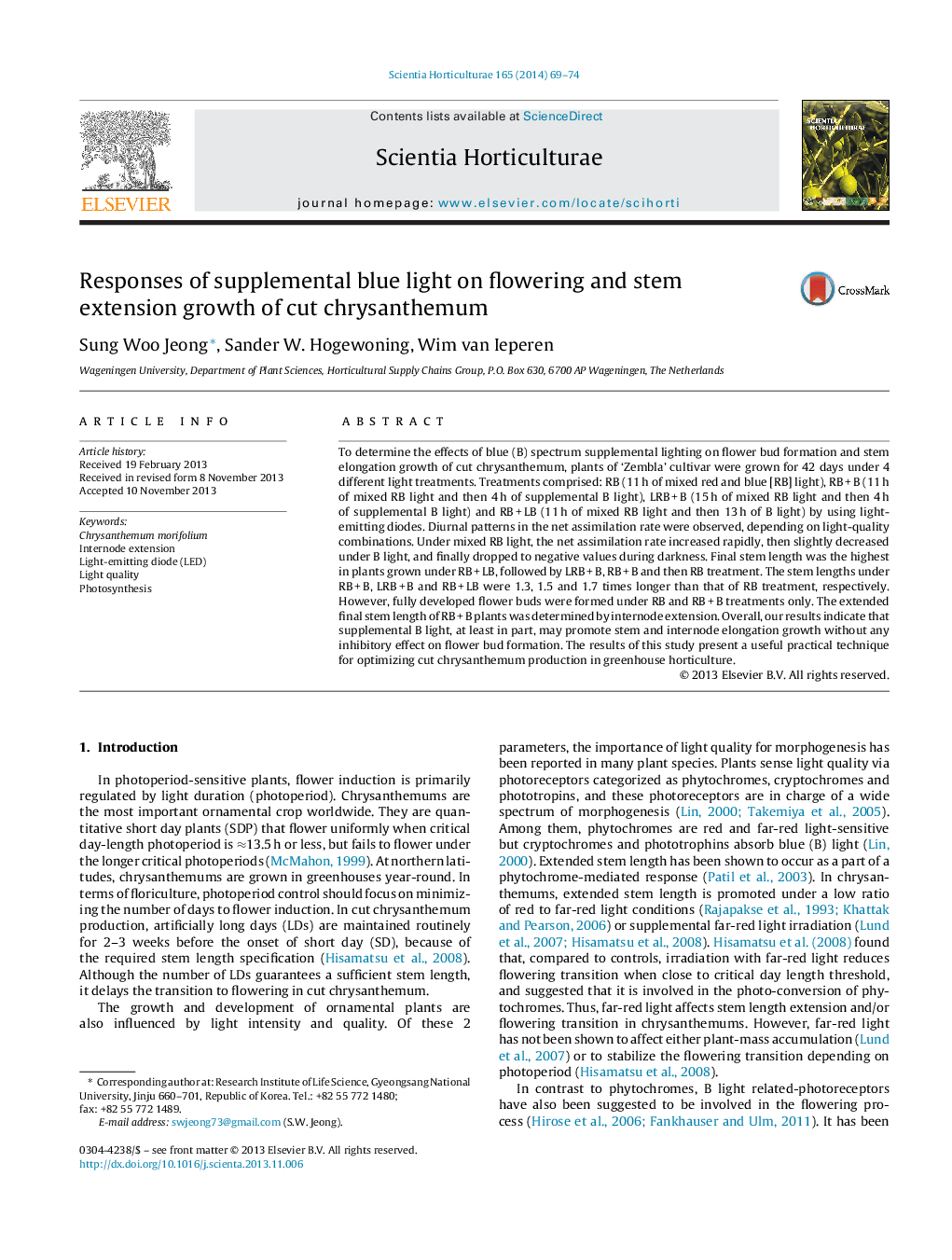| Article ID | Journal | Published Year | Pages | File Type |
|---|---|---|---|---|
| 6407382 | Scientia Horticulturae | 2014 | 6 Pages |
â¢Supplemental blue light promotes internode and stem growth in chrysanthemum.â¢Flower bud inhibition is determined by mixed red and blue light duration.â¢Supplemental B light promotes stem growth without flower bud inhibition.
To determine the effects of blue (B) spectrum supplemental lighting on flower bud formation and stem elongation growth of cut chrysanthemum, plants of 'Zembla' cultivar were grown for 42 days under 4 different light treatments. Treatments comprised: RB (11Â h of mixed red and blue [RB] light), RBÂ +Â B (11Â h of mixed RB light and then 4Â h of supplemental B light), LRBÂ +Â B (15Â h of mixed RB light and then 4Â h of supplemental B light) and RBÂ +Â LB (11Â h of mixed RB light and then 13Â h of B light) by using light-emitting diodes. Diurnal patterns in the net assimilation rate were observed, depending on light-quality combinations. Under mixed RB light, the net assimilation rate increased rapidly, then slightly decreased under B light, and finally dropped to negative values during darkness. Final stem length was the highest in plants grown under RBÂ +Â LB, followed by LRBÂ +Â B, RBÂ +Â B and then RB treatment. The stem lengths under RBÂ +Â B, LRBÂ +Â B and RBÂ +Â LB were 1.3, 1.5 and 1.7 times longer than that of RB treatment, respectively. However, fully developed flower buds were formed under RB and RBÂ +Â B treatments only. The extended final stem length of RBÂ +Â B plants was determined by internode extension. Overall, our results indicate that supplemental B light, at least in part, may promote stem and internode elongation growth without any inhibitory effect on flower bud formation. The results of this study present a useful practical technique for optimizing cut chrysanthemum production in greenhouse horticulture.
